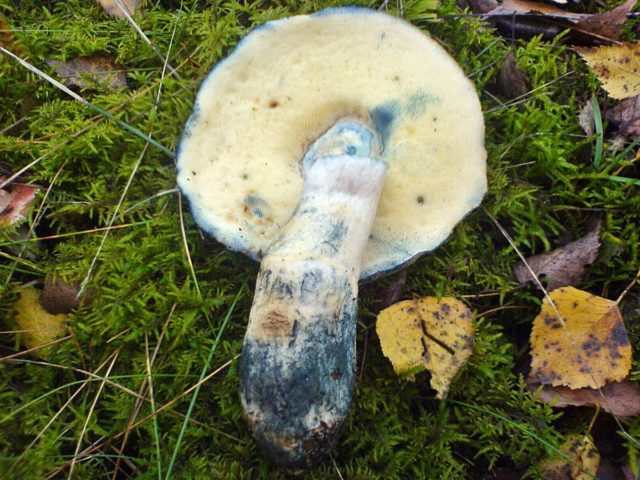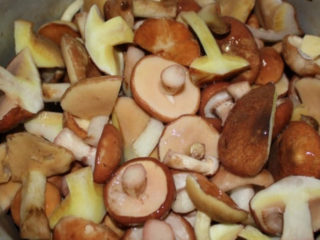Content
Mushroom poisoning is a rather unpleasant phenomenon, in some cases deadly. That is why many, even experienced mushroom pickers, are suspicious of any non-standard phenomena associated with their collection. One of these phenomena is the bluing of the site of damage or fracture of the fruiting bodies. Quite often, mushrooms that look like boletus turn blue when cut. Next we will consider whether this is the norm and whether it poses a danger to the mushroom picker.
Do boletus turn blue when cut?
The question of whether oilcans can turn blue in places of damage worries many mushroom pickers. But, in general, a change in the color of the fruiting body when damaged is characteristic of almost all representatives of the mushroom kingdom, without exception. It’s just that in some species it is almost invisible, in others the color may be slightly different, and in others (in particular, representatives of the Boletaceae family) it can be especially pronounced.
Below is a photo illustrating this phenomenon:
Why do boletus turn blue when cut?
The reason for the change in color of the stem or cap when damaged (no matter whether it is a cut or the result of cleaning) is the oxidative chemical reaction of the juices of the fruiting body and the oxygen contained in the air.
The cut breaks the tightness of the stem, and the juices react with atmospheric oxygen. This property is inherent in all mushrooms without exception.
What types of oilseeds turn blue when cut?
There are several types of Maslenkov, the place of damage of which turns blue:
- Larch gray or bluish. Its distinctive feature is its almost flat cap. Its surface is light brown. The stem should turn blue after cutting, which is reflected in its name. Nevertheless, it is classified as edible (albeit category 3); it is often eaten salted.
- Yellow-brown. His hat is the same color. It is classified as inedible, although not poisonous.
- Peppery. It differs from ordinary representatives of Boletidae in the absence of a ring and a reddish hymenophore. Also conditionally edible, but non-poisonous. Due to its excessively pungent taste, it is rarely used as an additive similar in action to spices.
What other mushroom that looks like an oil can turns blue when cut?
Not only mushrooms such as boletus turn blue when cut. There are several types that also have a similar property:
- An ordinary bruise. Belongs to the genus Giroporus of the Boletaceae family. It has a large cap with a diameter of more than 15 cm. The stem is white, the cap is beige.
- Moss fly yellow-brown. Conditionally edible, similar in appearance to the Maslenkovs.If the color change occurs almost immediately after the break, it is most likely a flywheel. A distinctive feature is that the cap is quite thick. In addition, when cooked, this species turns all its “neighbors” red.
- Dubovik. A large olive-brown representative of the boletus genus. Found mainly in oak groves.
- Polish mushroom. Also a representative of boletus. Quite large, has a large and fleshy hemispherical cap. It is considered a very tasty, almost delicacy dish. It is found in both coniferous and deciduous forests.
- Ryzhik. Also classified as “blue”, but there is no doubt about its edibility.
- Satanic mushroom. It has a squat and thick body with a red leg and a white cap. It changes color at the site of damage, but it is difficult to confuse it with any edible representative due to its characteristic appearance.
As can be seen from the description, a change in color at the site of damage is characteristic of a fairly wide variety of species, and there is nothing dangerous in this phenomenon.
Should I worry if the butterfly mushroom turns blue when cut?
If hog oils turn blue, there is no danger. This property is characteristic not only of representatives of this genus, but also of many others having the most diverse origins and growth conditions.
Conclusion
The phenomenon when butter mushrooms turn blue when cut is completely normal and natural. This is a common reaction between mushroom juice and oxygen. This phenomenon cannot be attributed to a sign of toxicity, since it is characteristic of representatives of various genera of the mushroom kingdom. If the oiler changes color during collection or cleaning, there is no need to throw it away and wash the instrument.If a given specimen has been clearly identified as edible, it can be safely eaten.



















